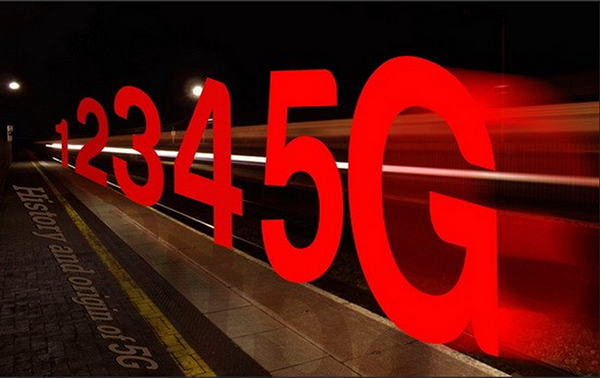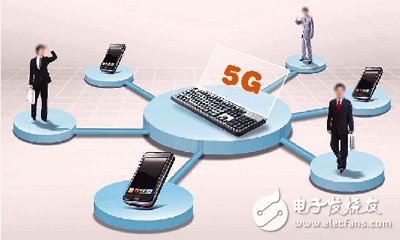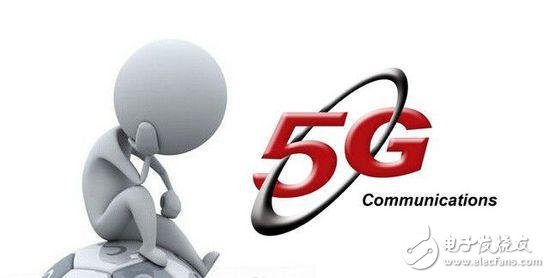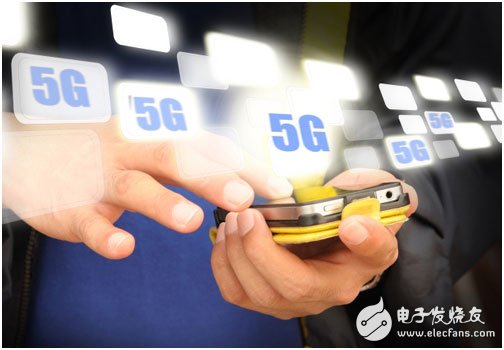Not long ago, Premier Li Keqiang proposed that "the speed of the network is slow and fast", which makes people feel the same. And with the arrival of 5G, 4G seems to be the end of the strong.
Although the current 5G standard is still far away, considering the huge terminal access, data traffic demand brought by the Internet of Things and the Internet of Things, and the increasing demand for a variety of application experiences, some "hard requirements" for 5G have been obtained in advance. Widely recognized by the industry. The world's major manufacturers are rushing to start the 5G "preparation war", it is necessary to seize the 5G market.

5G not only increases the speed of the network
5G is not only speed, it is 100 times faster than 4G; and in terms of capacity, 5G will achieve 1000 times more mobile data traffic per unit area than 4G; in terms of transmission rate, typical user data rate is increased by 10 to 100 times, peak transmission rate Up to 10 Gbps; in terms of latency, the end-to-end delay is 5 times shorter than 4G; in terms of accessibility, the number of networkable devices is increased by 10 to 100 times; in addition, in terms of reliability, low-power MMC (machine The battery life of the device will increase by a factor of 10.

In May 2014, the IMT-2020 (5G) Promotion Group released its first 5G white paper, The 5G Vision and Requirements White Paper. The white paper points out that 5G needs to have higher performance than 4G, support 0.1-1Gbps user experience rate, one million connection density per square kilometer, millisecond end-to-end delay, tens of Tbps per square kilometer. Flow density, mobility above 500Km per hour and peak rate of tens of Gbps. Six key performance indicators are proposed, including user experience rate, connection density, end-to-end delay, traffic density, mobility, and user peak rate. User experience rate refers to the lowest transmission available to users in a real network environment. rate.
At the same time, the white paper also pointed out that 5G needs to significantly improve the efficiency of network deployment and operation. Compared with 4G, spectrum efficiency is increased by 5-15 times, energy efficiency and cost efficiency are more than 100 times.
5G technology challenges
The future 5G network is likely to be a multi-service, multi-access technology, multi-level coverage system. How to integrate and rationally use these organic technologies to provide users with the best service experience and provide operators with the strongest network capabilities. Etc., is the primary technical challenge; at the same time, the new transmission technology and networking mode supporting 5G will bring new challenges such as equipment implementation complexity, equipment R&D cost, network construction and operation and maintenance; and based on unified communication protocol. Standard design supports a wide range of business agility and challenges future IMT system protocols and technology design.

In addition, 2020 5G mobile terminals are likely to support 5-10 or more different wireless communication technologies, which is also a challenge for chip design, power consumption, standby time, etc. Network virtualization technology, SDN, NFV, etc. are revolutionizing the transmission network architecture. How wireless mobile communication networks adapt to future business applications needs further exploration and research. Of course, the current 5G is still young, and I believe that under the joint promotion of the entire industry, these challenges will be solved in the next few years!
Global 5G layout
NOKIA5G has "smashed Samsung"
Nokia presented the latest 5G technology at the annual Brooklyn 5G Summit, "Spike Samsung." This technology can increase the speed of the network to 10GB per second. This speed will be 40 times faster than the current 4G network. At the same time, this also means that under such a high-speed network, a standard-length HD movie can be downloaded in a blink of an eye. This speed may also lay the foundation for the transmission and processing of next-generation video and 8K pictures, and will also reduce the lag of video calls.

Nokia's network system is about 10 times faster than the fastest fiber-optic Internet (including Google's Fiber network deployed in the US), and it's about 25% faster than Samsung's similar technology at the beginning of this year.
Cool "Pathfinder" 5G: close to the needs of operators
In the 5G battle, Coolpad also achieved good results: in the IETF led the release of three Internet international technical standards, and in 3GPP also a number of technical research results were written into the official technical report. In China, IMT2020 is also actively investing in research, leading the research in the two topics of ultra-dense deployment and terminal direct communication. In early 2015, it was successfully added as a member of the IMT2020 promotion group and entered the expert group. This is from the national 3G promotion group. Since its establishment, it has expanded for the first time.
In contrast, in the domestic terminal industry, Coolpad's investment in 5G pre-research and standardization is in a leading position in terms of manpower, financial support, and research capability and level.

Manufacturers "landing landing"
Ericsson's major breakthrough in 5G technology is: 5G-LTE dual connectivity and 5G multipoint connectivity. The former refers to the movement of 5G mobile devices between the coverage areas of LTE and 5G radio access networks, establishing parallel connections with the two networks, and then seamlessly switching the networks. The latter 5G multi-point connection means that the mobile device connects two 5G base stations in parallel, and the rate is undoubtedly faster.
ZTE has launched the "Pre-5G" solution, which is a concept between 4G and 5G. The Pre-5G is able to provide a user experience that is much higher than 4G, such as throughput and latency, which will be far superior to 4G, even reaching the level of 5G. The difference between the Pre-5G and the real 5G is that 5G needs to wait for the standard to be completed, the chip and the terminal are mature, and can be experienced by the user. The Pre-5G can be gradually introduced on the 4G network, allowing the user to experience the 5G service earlier.
Huawei has made breakthroughs in many areas such as 5G networking architecture, spectrum usage, air interface technology, and base station implementation.
On the chip side, MediaTek clearly stated that it has invested in human resources and resources for R&D in 5G. Mobile terminal companies have also increased their investment in 5G. Coolpad said that it will invest 100 million yuan each year to invest in 5G research and development, mainly focusing on research related to terminal related technologies.
5G era: Is it really a paradise on earth?
First of all, it is certain that since the Internet speed in the 5G era exceeds the current speed of fiber-optic broadband access, the various Internet applications in your home can be easily realized and experienced better on mobile terminals in the 5G era. For example, watch ultra-clear (4K) video anytime, anywhere, 4K video conferences anytime, anywhere, download as fast as you want, etc. (perhaps no need to download at that time).

In the 4G era, the main reason why car networking or autonomous driving did not really spread was that 4G's delayed performance was not ideal enough to meet the safety requirements of autonomous driving (ie, the brake reaction time was too long). In the 5G era, the delay will be reduced to less than 1 millisecond, which will make the vehicle travel distance less than 20 cm during the braking reaction time, which truly meets the needs of safe driving and makes automatic driving possible.
In addition, by 2020, the Internet of Things era will really open up - 5G will penetrate into all areas of the future society, and build a comprehensive information ecosystem with users as the center; it will make information break through time and space and provide excellent interaction. Experience, bring users an immersive information feast; 5 will also bring the distance of all things closer, through the seamless integration, convenient realization of the intelligent interconnection of people and everything. Just like the vision of the IMT-2020 (5G) promotion group: the information is at your heart, everything is tentacle!
In fact, all of the above imaginings are just future application scenarios that we have outlined at the current stage. I believe that with the true arrival of the 5G era, our application requirements for 5G will change, or we will begin to think about the 6G era. But what is certain is that with the maturity and application of 5G technology, our future life will become more exciting and more worth looking forward to!
1. An open structure of heating elements with half round stainless steel
reflectors for an optimal use of energy.
2. The Gyros will change direction automatice, if there is a force.
3. Removable and detachable parts for easy clean.
4. The particular broiling result is obtained by alternating heating and
cooling down. The meat fibres do not harden, and the gravy is flavoured
by the spices. This cooking mode results in very healthy meat.
5. The Vertical Grill allows broiling meat layers, shashlik, party sausages,
poultry and fish with few attachments.
6. The Skewers and Gyros go in opposite direction so that the food could
be heated more well.
7. Power: 1400W

Smokeless Electric Grill,Electric Multi Grill,Non-Stick Electric Grill,Electric Bbq Grill
Housoen Electric Manufacture Co., Ltd. , https://www.housoenappliances.com